‘Rings Of Power’ Showrunner Provides Bogus Answer For Decision To Include A Wizard

The Lord of the Rings: The Rings of Power showrunner J.D. Payne provided another bogus answer as to why he and his co-showrunner Patrick McKay and Prime Video decided to include a wizard in the show.

LONDON, ENGLAND – AUGUST 30: (L-R) JD Payne, Lindsey Weber and Patrick McKay attends “The Lord of the Rings: The Rings of Power” World Premiere at Odeon Luxe Leicester Square on August 30, 2022 in London, England. (Photo by Tim P. Whitby/Tim P. Whitby/Getty Images for Prime Video)
The Rings of Power includes a character the show calls The Stranger played by Daniel Weyman.
A portion of the story follows this character’s story as he arrives on Middle-earth as comet or meteor and then aids the Hobbits in their migration and eventually defends them from a number of minions of Sauron who were tracking him and believed he was Sauron.
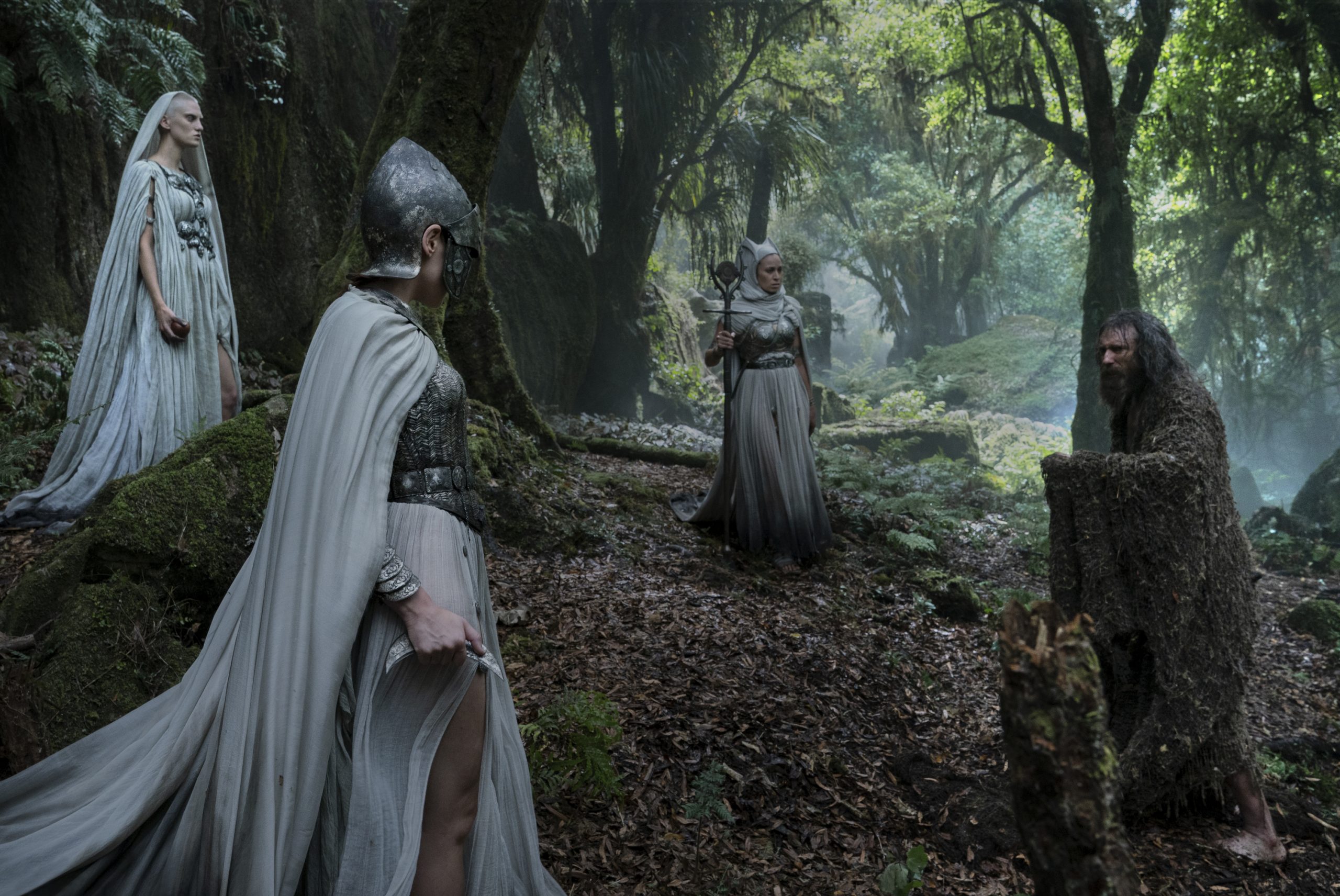
Daniel Weyman as The Stranger in The Lord of the Rings: The Rings of Power
When asked by Vulture’s Jackson McHenry as to why one of the Istari is included in the show that is set in Tolkien’s Second Age, Payne replied, “When we were laying out the menu, so to speak, that we felt would be in a classic Tolkienian epic, there were certain ingredients that would have to be part of it: Elves, dwarves, halflings — in the form of Harfoots. It was hard for us to think of a Middle-earth tale that did not have a wizard in it.”
Payne continued, “We also found hints within the text that, while the wizards’ most prominent role was in the Third Age, some of the Istari wandered unknown among the beings of Middle-earth even earlier than that.”
Finally, he concluded, “Whether that’s one of the ones that are named, like Gandalf or Saruman, or other ones, we will leave to the series to unveil.”

LONDON, ENGLAND – AUGUST 30: Showrunner/Executive Producer JD Payne, Showrunner/Executive Producer Patrick McKay attend The Lord of the Rings: The Rings of Power” World Premiere at Odeon Luxe Leicester Square on August 30, 2022 in London, England. (Photo by Andrew Timms/Prime Video)
This answer is completely bogus as it directly contradicts Tolkien’s writings. Not only that, but it is another piece of an ever-growing mound of evidence that Payne and his co-showrunner Patrick McKay are simply liars.
First, McKay and Payne previously indicated the show did not have the rights to a number of Tolkien’s writings such as The Silmarillion or Unfinished Tales, but they did have the rights to The Lord of the Rings books proper as well as their appendices.

Source: The Silmarillion
Payne told Vanity Fair in February, ““We have the rights solely to The Fellowship of the Ring, The Two Towers, The Return of the King, the appendices, and The Hobbit. And that is it. We do not have the rights to The Silmarillion, Unfinished Tales, The History of Middle-earth, or any of those other books.”
McKay would elaborate saying, “There’s a version of everything we need for the Second Age in the books we have the rights to.”
“As long as we’re painting within those lines and not egregiously contradicting something we don’t have the rights to, there’s a lot of leeway and room to dramatize and tell some of the best stories that [Tolkien] ever came up with,” he added.

Charlie Vickers as Halbrand in The Lord of the Rings: The Rings of Power
They did not paint within the lines when it comes to the inclusion of this Istari and it directly contradicts what J.R.R. Tolkien wrote in Appendix B concerning the arrival of the Istari to Middle-earth during the Third Age.
In the second paragraph of Appendix B which is subtitled The Third Age, Tolkien wrote, “When maybe a thousand years had passed, and the first shadow had fallen on Greenwood the Great, the Istari or Wizards appeared in Middle-earth.”
Tolkien continued, “It was afterwards said that they came out of the Far West and were messengers sent to contest the power of Sauron, and to unite all those who had the will to resist him; but they were forbidden to match his power with power, or to seek to dominate Elves or Men by force and fear.”

Ian McKellen as Gandalf in The Hobbit
Tolkien further detailed, “They came therefore in the shape of Men, though they were never young and aged slowly, and they had many powers of mind and hand. They revealed their true names to a few, but used such names as were given to them. The two highest of this order (of whom it is said there were five) were called by the Eldar Curunír, ‘the Man of Skill’, and Mithrandir, ‘the Grey Pilgrim’, but by Men in the North Saruman and Gandalf.’
“Curunír journeyed often into the East, but dwelt at last in Isengard. Mithrandir was closest in friendship with the Eldar, and wandered mostly in the West and never made for himself any lasting abode,” Tolkien explained.
By 1100 of the Third Age, “The Wise (the Istari and the chief Eldar) discovered that an evil power has made a stronghold at Dol Guldur. It is thought to be one of the Nazgûl.”

Ian McKellen as Gandalf in The Hobbit via Deathstroke24120 YouTube
In letter 144 to Naomi Mitchison, Tolkien also noted, “Their origin was not known to any but a few (such as Elrond and Galadriel) in the Third Age. They are said to have first appeared about the year 1000 of the Third Age, when the shadow of Sauron began first to grow again to new shape.”
He continued, “They always appeared old, but grew older with their labours, slowly, and disappeared with the end of the Rings. They were thought to be Emissaries (in the terms of this tale from the Far West beyond the Sea), and their proper function, maintained by Gandalf, and perverted by Saruman, was to encourage and bring out the native powers of the Enemies of Sauron. Gandalf’s opposite was, strictly, Sauron, in one part of Sauron’s operations; as Aragorn was in another.”
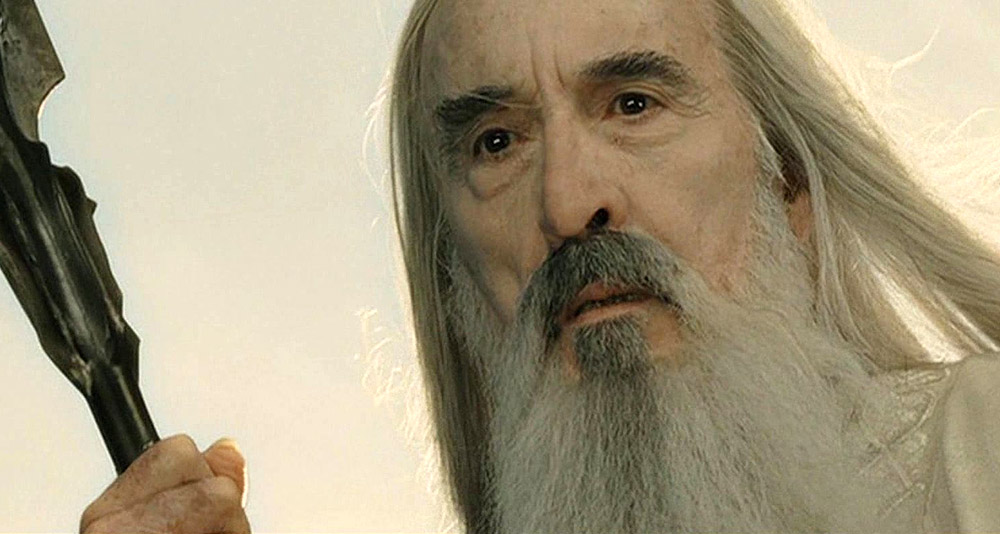
Christopher Lee as Saruman in The Lord of the Rings: The Return Of The King
While the Istari in physical form did not arrive in Middle-earth until around the year 1000 of the Third Age, Gandalf as a Maiar known as Olórin did indeed have contact with the peoples of Middle-earth specifically the Eldar.
In The Lord of the Rings: The Two Towers, Faramir reveals that Gandalf went by the name of Olórin. Tolkien wrote, “‘Mithrandir we called him in elf-fashion,’ said Faramir, ‘and he was content. Many are my names in many countries, he said. Mithrandir among the Elves, Tharkûn to the Dwarves; Olórin I was in my youth in the West that is forgotten, in the South Incánus, in the North Gandalf; to the East I go not.’
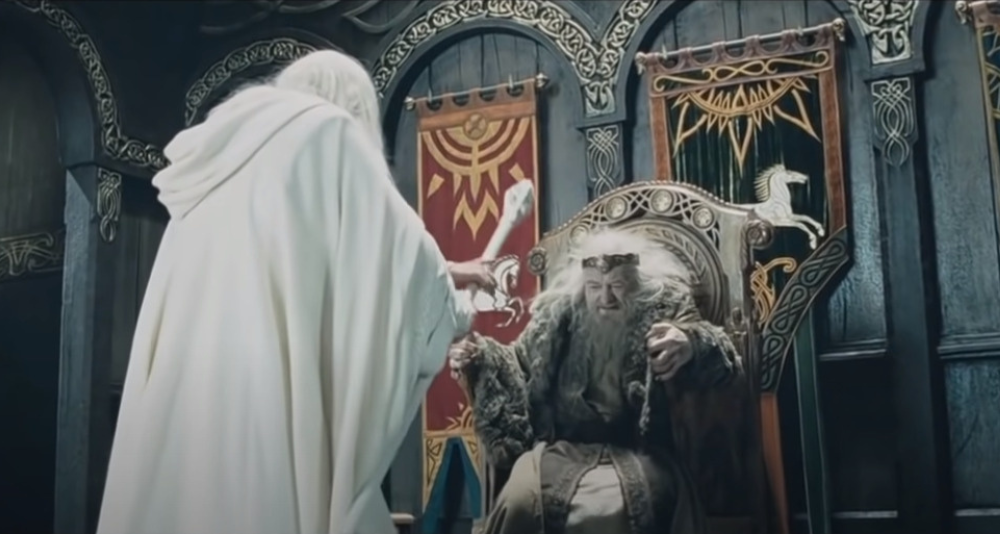
Ian McKellen as Gandalf and Bernard Hill as Theoden in The Lord of the Rings: The Two Towers
In The Silmarillion, it’s revealed Olórin was one of the Maiar. Tolkien wrote, “Wisest of the Maiar was Olórin. He too dwelt in Lórien, but his ways took him often to the house of Nienna, and of her he learned pity and patience.”
“Of Melian much is told in the Quenta Silmarillion. But of Olórin that tale does not speak; for though he loved the Elves, he walked among them unseen, or in form as one of them, and they did not know whence came the fair visions or the promptings of wisdom that he put into their hearts. In later days he was the friend of all the Children of Ilúvatar, and took pity on their sorrows; and those who listened to him awoke from despair and put away the imaginations of darkness,” Tolkien detailed.
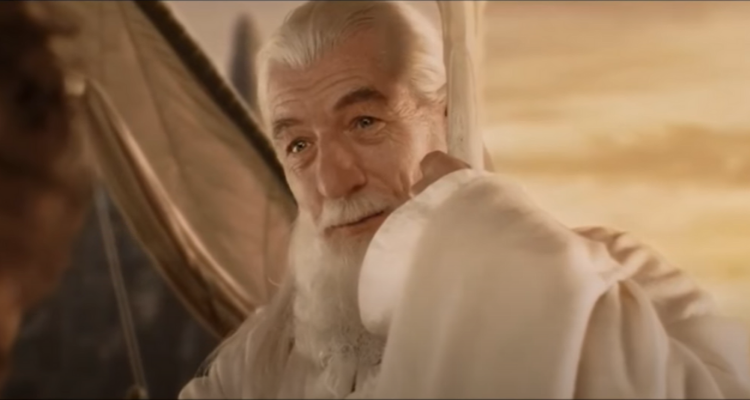
Ian McKellen as Gandalf in The Lord of the Rings: The Return of the King
It’s clear the Istari did not wander Middle-earth before they arrived in the Third Age around the year 1000. However, while they were in non-physical forms they did mingle with other peoples of Middle-earth.
However, Rings of Power clearly shows an Istari in physical form and not an incarnate angel as Tolkien described them in Letter 156 to Father Robert Murray.
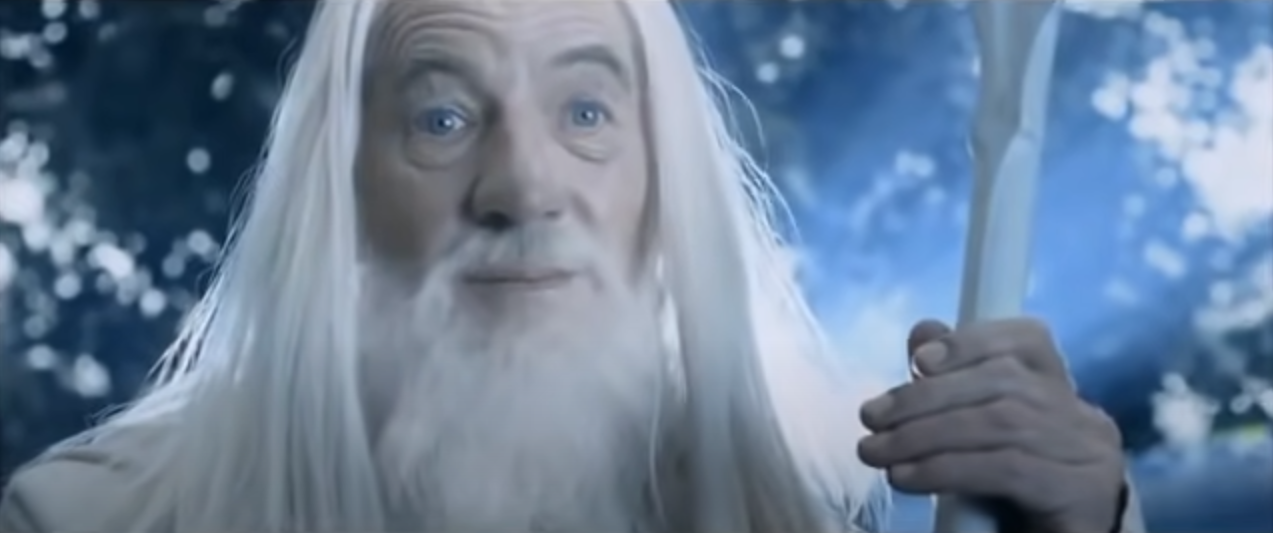
Ian McKellen as Gandalf in The Lord of the Rings: The Two Towers Extended Edition
Tolkien detailed the nature of the Istari to Father Robert Murray writing, “There are naturally no precise modern terms to say what he was. I wd. venture to say that he was an incarnate ‘angel’– strictly an γγελος: that is, with the other Istari, wizards, ‘those who know’, an emissary from the Lords of the West, sent to Middle-earth, as the great crisis of Sauron loomed on the horizon. By ‘incarnate’ I mean they were embodied in physical bodies capable of pain, and weariness, and of afflicting the spirit with physical fear, and of being ‘killed’, though supported by the angelic spirit they might endure long, and only show slowly the wearing of care and labour.”
He further explained, “Why they should take such a form is bound up with the ‘mythology’ of the ‘angelic’ Powers of the world of this fable. At this point in the fabulous history the purpose was precisely to limit and hinder their exhibition of ‘power’ on the physical plane, and so that they should do what they were primarily sent for: train, advise, instruct, arouse the hearts and minds of those threatened by Sauron to a resistance with their own strengths; and not just to do the job for them.”
“They thus appeared as ‘old’ sage figures,” he elaborated. “But in this ‘mythology’ all the ‘angelic’ powers concerned with this world were capable of many degrees of error and failing between the absolute Satanic rebellion and evil of Morgoth and his satellite Sauron, and the fainéance of some of the other higher powers or ‘gods’. The ‘wizards’ were not exempt, indeed being incarnate were more likely to stray, or err. Gandalf alone fully passes the tests, on a moral plane anyway (he makes mistakes of judgement).”

Christopher Lee as Saruman in The Lord of the Rings: The Fellowship of the Ring
It’s not hard to think of a Middle-earth tale without the Istari. Tolkien wrote it in The Silmarillion. He makes it abundantly clear multiple times the Istari only appear during the Third Age. They are in a completely different form during the First and Second Ages.
Finally, there are no hints within the text that the Istari wandered Middle-earth before the Third Age. They didn’t. The Maiar, on the other hand, did.
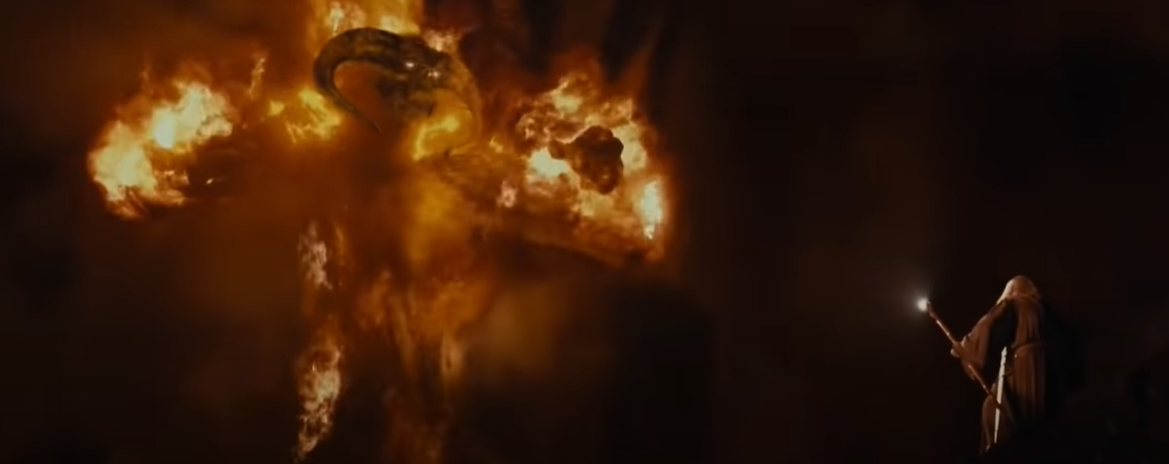
Ian McKellen as Gandalf in The Lord of the Rings: The Fellow of the Ring
What do you make of Payne’s latest lie regarding The Rings of Power?
More About:Books Television
